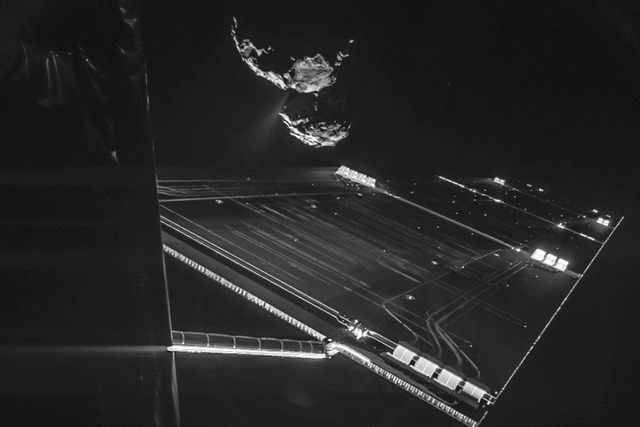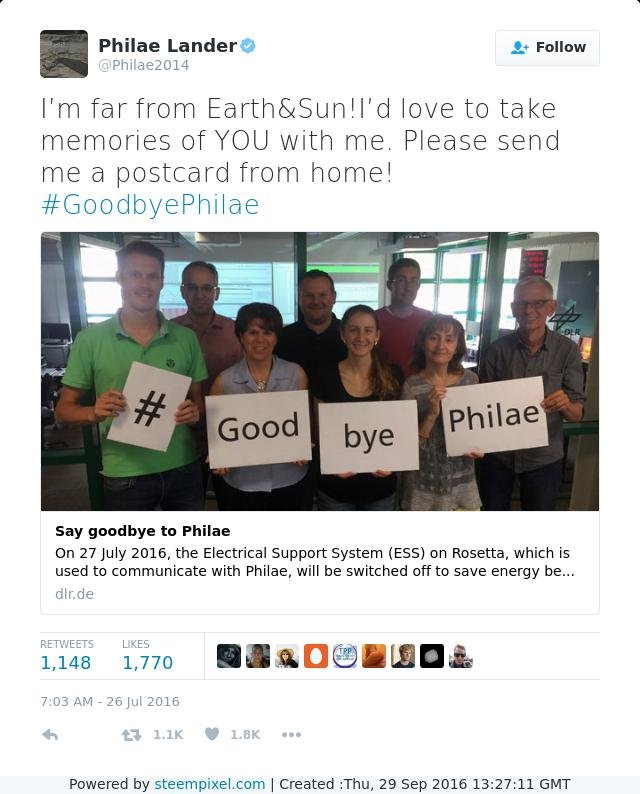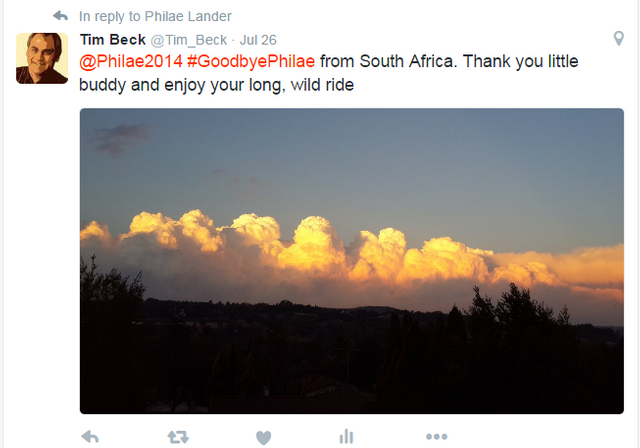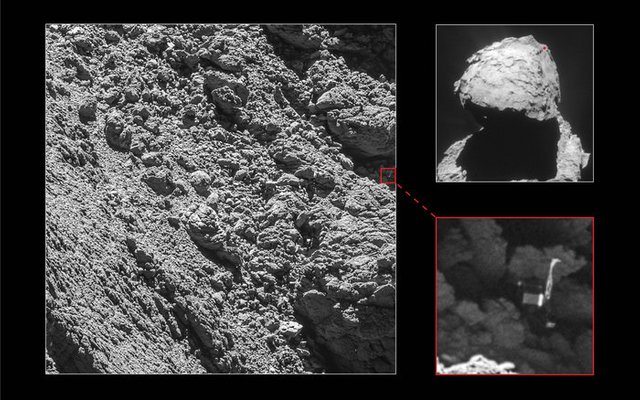Goodbye, Rosetta (sniff)

Photo credit: ESA
I thought it was just me. But no: almost everyone I spoke to who followed the Rosetta mission, felt a kind of emotional bond with those two little spacecraft so very far away from earth, orbiting and landing on an obscure chunk of ice and gas. For those of us following it, there was real tension and anxiety as we waited for the signals from Rosetta to reach us from more than 500 million kilometres away.
Had Philae landed? Yes! Elation. But then.. NOOO! Philae had bounced off the surface.
But WAIT! The little guy had landed again. Phew, that was close.
What was that? It bounced AGAIN? Just when things couldn't get more anxious, it landed. But in a bad, dark place, out of the power-giving sunshine.
"Hang in there, Philae - do your experiments while you still have the energy".
So for a few hours on 14 November 2014, Philae toiled away on the surface of comet 67P/Churyumov–Gerasimenko. It completed the 80% of tasks that did not require mechanical movement. But the ice was too hard to penetrate - the surface was far from the "soft and fluffy" one expected. But the results were nevertheless impressive. Molecules from the atmosphere were found to contain carbon and hydrogen. Sixteen organic compounds were detected in the soil samples - from the dust on the first touchdown.
Goodbye Philae
Philae then went took a seven month nap. After it woke up on 13 June 2015 it was able to transmit most of the data it had collected from its experiments. Hope sprung up that Philae could do further experiments, but communication became increasingly patchy, until all hope was lost that any further communication would be possible.
Hundreds of people from all around the world bade an emotional farewell to Philae on the eve of it being switched off for good.


Philae Found!
Philae had gone to sleep, but Rosetta was still closely monitoring the surface of Churyumov–Gerasimenko. And then on 2 September 2016, while slowly descending to the comet, Rosetta's narrow-angle camera caught an image of the lander.

Photo credit: ESA
The Final Curtain
The "death" of Philae was painful. But now the final curtain is being drawn. Tomorrow morning, Friday 30th September, Rosetta will crash land into the comet - a so-called "controlled impact" on its surface. The reason for the crash landing, rather than a soft landing is that Rosetta is going to go down doing science until the very last moment: collecting gas and dust samples and taking photographs. This is expected to yield some of mission's best results yet.
Its high-resolution cameras will be snapping pictures of the comet's surface, and by crash landing, the clarity of the images will be preserved. A soft landing would kick up a great deal of obscuring dust.
The crash site is an area called Ma’at, named after the ancient Egyptian goddess of harmony, balance, and order. But there doesn't appear to be anything harmonious and balanced about Ma'at: it has active pits venting dust into space. This should make the pictures very interesting indeed.
Rosetta will end all communication as soon as it impacts, but not before transmitting all this valuable data back to earth. We can expect the images released tomorrow evening.
Timeline
29 September 20:50 GMT / 16:50 EST: Rosetta begins its controlled descent towards the comet.
30 September 7:55 - 8:05 GMT / 3:55 - 4:05 EST: Last commands and confirmation of landing time.
30 September 10:30 - 11:40 GMT / 6:30 - 7:40pm EST: The end.
You can follow a live stream of Rosetta's grand finale here.
Goodbye, Rosetta. You'll be missed. (sniff)
Yes it's a little bit sad! I followed the mission too! Bye, bye <3